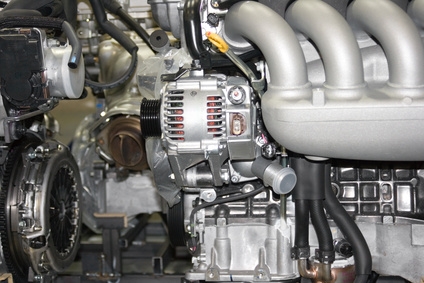
The temperature sending unit or engine coolant temperature sensor (ECT) monitors the engine temperature and sends a signal back to the Chrysler's computer. There are symptoms or indications that the temperature sending unit is failing or bad. These symptoms cause the engine to act abnormally, such as stalling or missing.
One of the first indications of a bad temperature sending unit in a Chrysler is found on the instrument panel. A temperature gauge is located on the dash of the Chrysler and informs the operator of the current engine temperature. The gauges look differently on each model of the Chrysler, but the gauge shows what is an acceptable engine temperature. The temperature gauge also shows what is unacceptable by a warning light or gauge needle moving into the red on the gauge.
A symptom of a bad temperature sending unit is steam rising from under the hood of the Chrysler from the radiator. The radiator coolant has gotten so hot that it is turning the coolant from liquid to steam. This is a good indication that the temperature sending unit is not working properly.
Another indication of a bad temperature sending unit is the fuel efficiency of the Chrysler. The fuel efficiency is the measurement of miles that can be driven on one gallon of gas. A Chrysler that gets 25 mpg will begin to get only 18 or 20 mpg when the temperature sending unit fails.
A bad temperature sending unit in a Chrysler will prevent the engine temperature from warming at a normal rate. Once the engine is driven cold, the Chrysler will begin to cough or stall, possibly miss or misfire. This cold engine driving can also cause the Chrysler to fail an emissions test because the emissions are not being processed properly. This can be seen on the temperature gauge on the instrument panel.